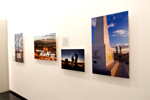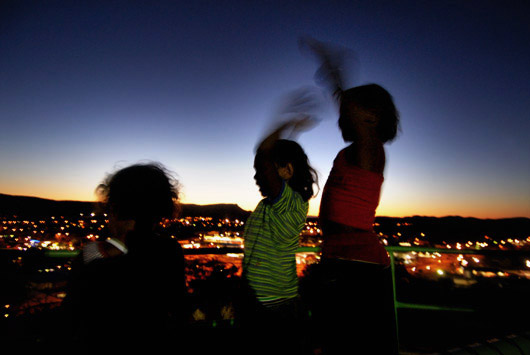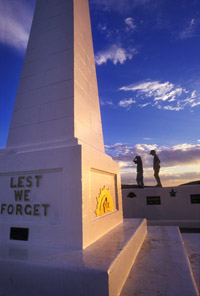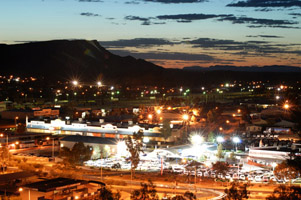Australia,
sulle tracce di Chatwin venti anni dopo Le Vie dei Canti
Palazzo Ducale, Genova
Australia, on Chatwin's footsteps twenty years
after The Songlines
Palazzo Ducale, Genoa


La
migliore visione di Alice è da Anzac Hill, la sera. Sulla collina
sacra agli Arrernte, che qui celebrano il Sogno del Bruco, ma anche a
chi è venuto dopo, i bianchi che in cima hanno eretto un monumento
ai caduti di tutte le guerre dell’Australian and New Zealand Army
Corps. Sullo sfondo la dorsale dei MacDonnell Ranger, attorno un oceano
di sabbia rossa della grandezza dell’Europa. Chatwin fa di Alice
il cuore dei suoi due soggiorni australiani, la base dei suoi spostamenti
nel Red Centre, il posto dove raccoglie informazioni e vive esperienze
che riversa poi nel suo libro, stabilendo relazioni con chi gli racconta
dei cammini percorsi dagli aborigeni per nutrire il loro indispensabile
rapporto con la terra. Nata nel 1888 attorno alla stazione telegrafica
e al pozzo d’acqua da cui prende il nome (Alice era la moglie di
Todd, sovrintendente dei telegrafi di Adelaide), Alice Springs è
oggi una città di 25 mila abitanti con un’economia basata
sul turismo, un reticolo di dieci strade tra il Todd River, in perenne
secca, e la Stuart Highway. Una piccola metropoli nel vuoto, dove i turisti
arrivano per poi ripartire verso i MacDonnell Ranges e Uluru. Un luogo
di passaggio o delle moderne opportunità nel deserto. Nel parcheggio
una coppia di migranti interni si gode lo spettacolo del sole che se ne
va, mangiando pollo alle mandorle e ascoltando a tutto volume The dark
side of the Moon dei Pink Floyd. Sono di Perth, Western Australia, in
giro da due anni «per vedere il paese» fermandosi ogni tanto
per guadagnare qualche soldo. Sono ad Alice da tre mesi, lei lavora al
posto di polizia locale, lui fa lavoretti part time. Ancora per un po’,
poi contano di ripartire. La frontiera è mobile. Si brinda insieme,
a Coca Cola, alla notte tropicale

